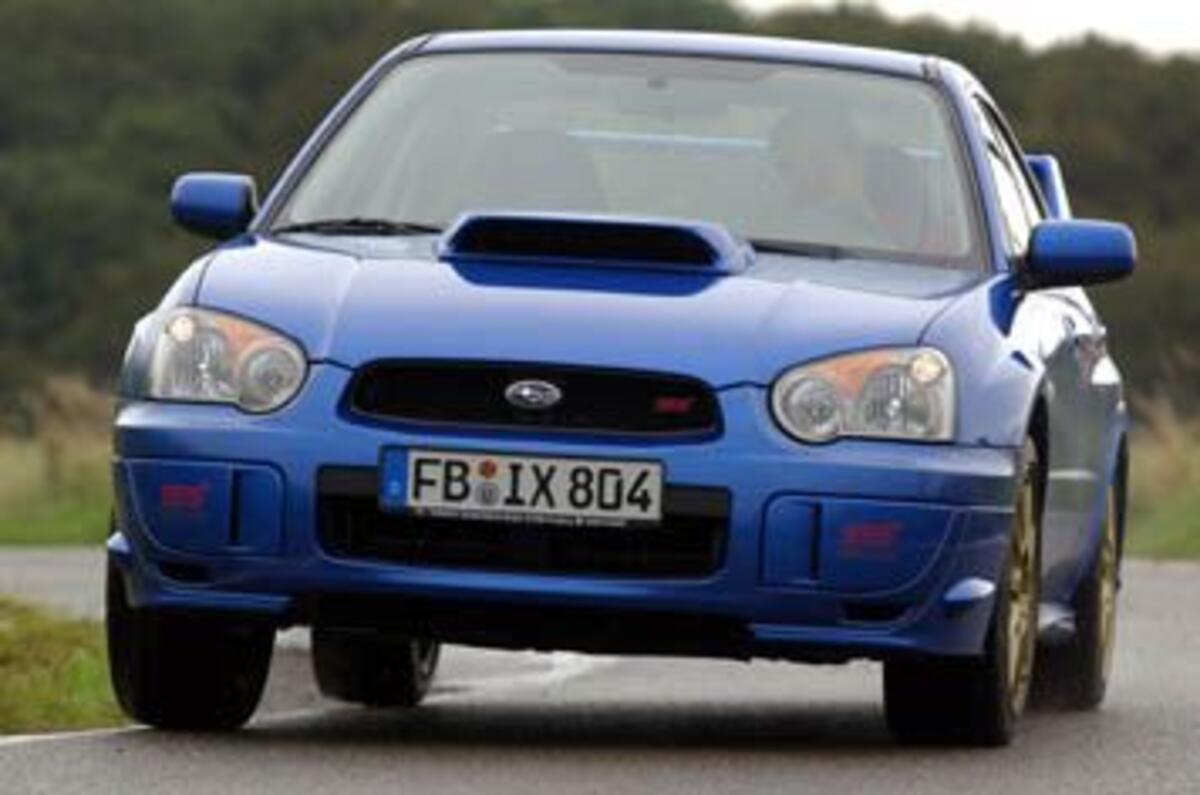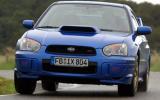Don’t be fooled by the unaltered outline: Subaru’s STi has changed. It still has looks that make you a target for every hot hatch in a 10-mile radius, now made more OTT by rear wheelarch extensions and new gold alloy wheels.
But this is not a styling overhaul. Those plasticky arches conceal a 15mm wider rear track. The wheelbase has been stretched, too, by 10mm, and those rims are half an inch wider to reduce sidewall flex in the serious-looking 225/45 R17 Bridgestone Potenza RE070 tyres.
Acceleration and braking were never a problem with the old STi. So the Brembo brakes and turbocharged 262bhp all-alloy flat-four engine are carried over, albeit now with a manual intercooler spray. There are also underfloor covers to improve aerodynamics.
Does it feel any different? Absolutely. This is the kind of facelift we like. Most dramatic is the change in ride quality. There’s a bouncing motion on motorways, but it’s smoother around town and on some unusually rutted German lanes it feels utterly composed.
Whether by coincidence or by design, our test route told us why as we passed through the village of Bilstein. The Bilstein boys have done the business on the STi’s shock absorbers.
The new dampers’ extra compliance has allowed Subaru to add thicker anti-roll bars, further improving body control. The result is a car that’s much easier to drive quickly than the old STi, allowing you to exploit the huge potential of the chassis more fully and more often.
Revisions continue up front with a raised caster angle, stiffer suspension mounts and a more rigidly located steering rack with a damper to cut kick-back. Gone is the old car’s lethargy around the straight-ahead: the STi now turns into bends almost as eagerly as a Mitsubishi Evo.
Steering feedback is also improved, making the Impreza more involving. It feels grippier as well, with less understeer. And a faster-responding helical limited-slip differential at the front means less of a battle with the steering wheel when you apply full power out of a corner.
A small switch beside the handbrake indicates the arrival of the DCCD (driver-controlled centre differential) already fitted to the WR1. This allows you to transfer up to 65 per cent of the power to the rear wheels, at the same time disabling the yaw-rate sensor.
Without the WR1’s extra power you don’t get the same potential for opposite-lock exits from slower corners, but it does allow you to apply power earlier without fear of the nose running wide.
Unfortunately there’s still a clock-watching wait for the turbo’s boost to arrive. It’s only when you hit peak torque at 4000rpm that the car feels genuinely fast.
The six-speed gearbox is still noisy and notchy – though at least the smaller gearknob makes it slicker to use. Some of the classic Subaru burble is missing, too. Only when charging close to the 7500rpm shift light does it take on a hard-edged, WRC-style roar. On the flipside, you soon appreciate the lack of drone at motorway speeds.Inside, the cabin feels classier, but without the latest Legacy’s upmarket feel.
It’s still resolutely cheap, the dash-top more spongy than soft-touch, but the silvered centre console is attractive and the new wheel easier both on eyes and hands.















Add your comment